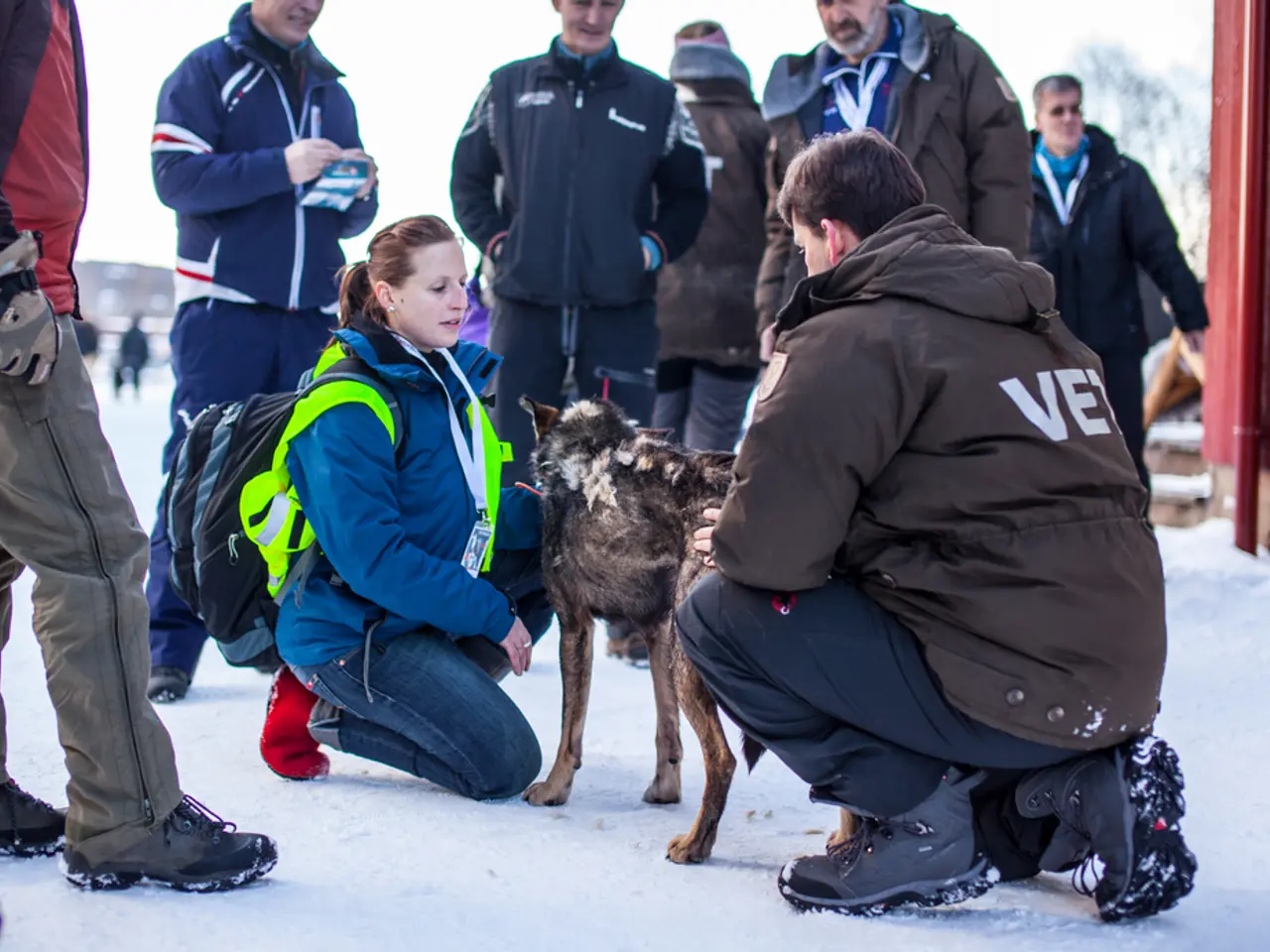small microdevice surpasses canine counterparts in detecting fentanyl at U.S border checkpoints
In a groundbreaking development, the Pacific Northwest National Laboratory (PNNL) has unveiled a portable sensor that can detect fentanyl vapors at extremely low concentrations. This sensor, named VaporID, is set to revolutionize disaster response and security measures.
The VaporID sensor employs advanced chemical sensing technology to identify trace amounts of fentanyl molecules in the air. It achieves this by using highly sensitive detection methods such as ion mobility spectrometry, surface-enhanced Raman spectroscopy, or specialized chemical receptors that bind fentanyl molecules selectively.
One of the key advantages of the VaporID sensor is its speed and sensitivity. Unlike traditional methods like swabs or canines, the sensor continuously samples ambient air for fentanyl vapors, making detection almost instantaneous. It can identify fentanyl concentrations at the parts per trillion level, which is far more sensitive than swabs that rely on residue or canine olfaction that depends on scent training and biological variability.
Moreover, the sensor provides rapid chemical analysis on-site without the need for lab processing, enabling quicker response times. In contrast, swabs require physical sampling and lab testing, which is slower, and canines, although effective, are limited by fatigue and environmental factors.
A key feature of the VaporID sensor is the atmospheric flow tube developed by PNNL chemist Robert Ewing and his team. This tube gives fentanyl molecules a few extra seconds to react with ions, enhancing the sensor's sensitivity.
The VaporID sensor has been under development for over two years in collaboration with BaySpec, and PNNL is now collaborating with the Department of Homeland Security to adapt the technology for screening cargo, baggage, mail, and people. A commercial version of the VaporID sensor that can detect both narcotics and explosives is expected to roll out later this year.
This breakthrough in fentanyl detection technology could have significant implications for disaster survivor search, national security, and homeland security applications. For more detailed technical specifics about the sensor’s design and detection mechanism, consult official PNNL publications or press releases.
The VaporID sensor, powered by robotics and advanced technology, utilizes scientific innovations such as ion mobility spectrometry and surface-enhanced Raman spectroscopy for rapid and sensitive detection of fentanyl vapors. This technology extends beyond drug detection, with potential applications in health-and-wellness fields, as PNNL collaborates with the Department of Homeland Security to adapt it for screening cargo, baggage, mail, and individuals, eventually offering a commercial version capable of detecting both narcotics and explosives.




